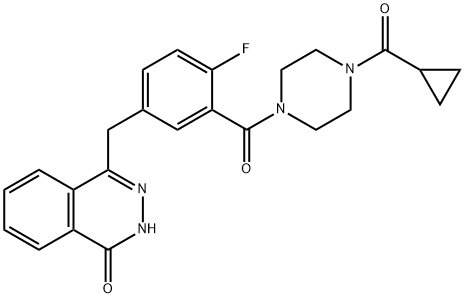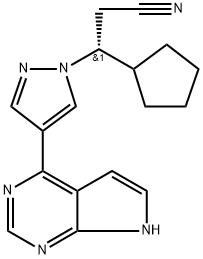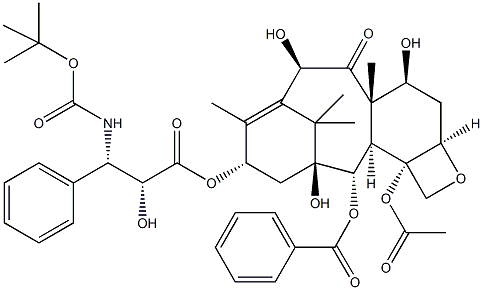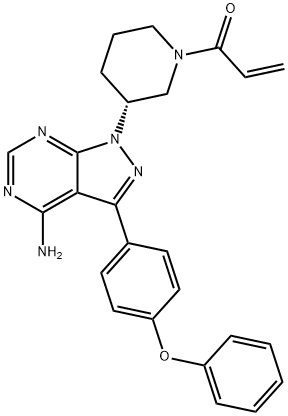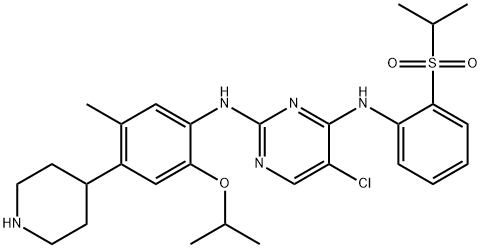Abiraterone acetate
Synonym(s):17-(Pyridin-3-yl)androsta-5,16-dien-3β-yl acetate;Abiraterone acetate;CB 7598
- CAS NO.:154229-18-2
- Empirical Formula: C26H33NO2
- Molecular Weight: 391.55
- MDL number: MFCD00934213
- EINECS: 620-314-7
- SAFETY DATA SHEET (SDS)
- Update Date: 2025-12-26 12:07:08
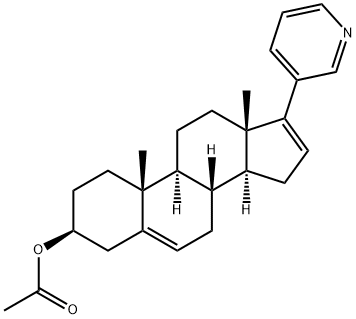
What is Abiraterone acetate?
Description
In April 2011, the United States FDA approved abiraterone acetate (CB7630) in combination with the steroid prednisone for the treatment of metastatic castration-resistant prostate cancer (mCRPC) for patients who were previously treated with a docetaxel containing regimen for late-stage disease. Abiraterone acetate affects prostate, testicular, and adrenal androgens by irreversibly inhibiting both the lyase and hydroxylase activity of cytochrome P450 17A (CYP17) signaling pathways (IC50's of 2.9 and 4 nM, respectively) thereby decreasing testosterone levels.Most common serious adverse events for abiraterone acetate versus placebo included fluid retention (30.5% vs. 22.3%), hypokalemia (17.1% vs. 8.4%), hypertension (9.7% vs. 7.9%), hepatic transaminase abnormalities (10.4% vs. 8.1%), and cardiac abnormalities (13.3% vs. 10.4%).
Chemical properties
Off-White Solid
Originator
Institute of Cancer Research, London (United Kingdom)
The Uses of Abiraterone acetate
Abiraterone acetate is a novel steroidal inhibitor of human Cytochrome P450 (17α-Hydroxylase-C17,20-lyase): potential agent for the treatment of prostatic cancer.
The Uses of Abiraterone acetate
A novel steroidal inhibitor of human Cytochrome P450(17a-Hydroxylase-C17,20-lyase): potential agent for the treatment of prostatic cancer.
The Uses of Abiraterone acetate
Abiraterone acetate was approved by the U.S. Food and Drug Administration (FDA) in April 2011 for the treatment of castrationresistant prostate cancer. The drug, marketed under the trade name Zytiga, was originally discovered by researchers at the Cancer Research UK Centre for Cancer Therapeutics in 1990, developed by Cougar Biotechnology, and ultimately commercialized by Johnson & Johnson after its acquisition of Cougar in 2009. Abiraterone acetate inhibits CYP17A1—an enzyme expressed in testicular, adrenal, and prostatic tumor tissues—which has been implied in the production of testosterone and the proliferation of such tumor cell lines.
What are the applications of Application
Abiraterone Acetate is a steroidal inhibitor of CYP17A1 in androgen biosynthesis
Definition
ChEBI: A sterol ester obtained by formal condensation of the 3-hydroxy group of abiraterone with the carboxy group of acetic acid. A prodrug that is converted in vivo to abiraterone. Used for treatment of metastatic castrate-resistant prostate cance .
brand name
Zytiga
Mechanism of action
Abiraterone acetate is converted in vivo into abiraterone, an androgen biosynthesis inhibitor that inhibits 17α- hydroxylase/C17,20-cleaving enzyme (CYP17). This enzyme is expressed in testicular, adrenal and prostate tumour tissues and is required for androgen biosynthesis. Inhibition of CYP17 by Abiraterone blocks androgen production, and inhibition of CYP17 also leads to increased production of salicorticotropin by the adrenal glands.
Biochem/physiol Actions
Abiraterone acetate is a prodrug of abiraterone, which is a potent, selective, and orally bioavailable inhibitor of CYP17A1 (CYP450c17), an enzyme that catalyzes two key serial reactions (17α hydroxylase and 17,20 lyase) in androgen and estrogen biosynthesis resulting in the formation of DHEA and androstenedione, which may ultimately be metabolized into testosterone. CYP17 is the key enzyme for androgen biosynthesis in both the testes and adrenals, so its inhibition should stop the production of androgens in both places. Abiraterone acetate is used for the treatment of metastatic castration-resistant prostate cancer. Abiraterone acetate possesses significant antitumor activity in post-docetaxel patients with CRPC (castration-resistant prostate cancer). It is highly essential for androgen biosynthesis in the testes, adrenal glands, and prostate tissue.
Clinical Use
Hormone antagonist:
Treatment of metastatic prostate cancer
Synthesis
The most convenient synthesis for scale-up will be highlighted from two published syntheses. Commercially available androstenolone 1 was acylated with acetic anhydride in the presence of boron trifluoride-diethyl etherate to give a near quantitative yield of acetate 2. The conversion of ketone 2 to vinyl triflate 3 involved careful selection of base to prevent elimination of the acetate group. To this extent, subjection of 2 to triflic anhydride in dichloromethane at ambient temperature followed by slow addition of triethylamine minimized undesired side products and delivered triflate 3 in 60% isolated yield. Subsequent Suzuki coupling with diethylborane 4 under standard conditions ultimately furnished abiraterone acetate (I) in 75% yield.

Drug interactions
Potentially hazardous interactions with other drugs
Antibacterials: concentration possibly reduced by
rifabutin and rifampicin - avoid.
Antidepressants: concentration possibly reduced by
St John’s wort - avoid.
Antiepileptics: concentration possibly reduced
by carbamazepine, fosphenytoin, phenobarbital,
phenytoin and primidone - avoid.
Side Effects
The most common adverse reactions to Abiraterone acetate include: fatigue, arthralgia, hypertension, nausea, oedema, hypokalaemia, hot flushes, diarrhoea, vomiting, upper respiratory tract infection, cough and headache. Other possible side effects include: hypertension, hypokalaemia, fluid retention, prolonged QT interval, tip-twist ventricular tachycardia.
Metabolism
Abiraterone acetate is hydrolysed to abiraterone, which then undergoes metabolism including sulphation, hydroxylation and oxidation mainly in the liver to form inactive metabolites. About 88% of a dose is excreted in the faeces, of which about 55% is unchanged abiraterone acetate and about 22% is abiraterone; about 5% of a dose is excreted in the urine.
Storage
Store at -20°C
Properties of Abiraterone acetate
| Melting point: | 127-130°C |
| Boiling point: | 506.7±50.0 °C(Predicted) |
| Density | 1.14±0.1 g/cm3(Predicted) |
| storage temp. | -20°C |
| solubility | Chloroform (Slightly), DMSO (Sparingly), Methanol (Sparingly) |
| pka | 5.31±0.12(Predicted) |
| form | powder |
| color | white to beige |
Safety information for Abiraterone acetate
| Signal word | Danger |
| Pictogram(s) |
 Health Hazard GHS08 |
| GHS Hazard Statements |
H360:Reproductive toxicity H372:Specific target organ toxicity, repeated exposure |
| Precautionary Statement Codes |
P201:Obtain special instructions before use. P202:Do not handle until all safety precautions have been read and understood. P260:Do not breathe dust/fume/gas/mist/vapours/spray. P264:Wash hands thoroughly after handling. P264:Wash skin thouroughly after handling. P270:Do not eat, drink or smoke when using this product. P308+P313:IF exposed or concerned: Get medical advice/attention. |
Computed Descriptors for Abiraterone acetate
Abiraterone acetate manufacturer
KP INNOVATIVE
Archerchem Healthcare Pvt., Ltd. (part of Archerchem Group)
New Products
4,4-Difluoropiperidine hydrochloride tert-butyl 9-methoxy-3-azaspiro[5.5]undecane-3-carboxylate Indole Methyl Resin N-Isopropylurea N,N-Dicyclohexylcarbodiimide(DCC) MELDRUMS ACID 5-METHYLISOXAZOLE-4-CARBOXYLIC ACID Magnessium Bis glycinate Zinc ascorbate 1-bromo-2-butyne 2-acetamidophenol 9(10H)-anthracenone Erythrosin B, 4-Piperidinopiperidine 2-((4-morpholinophenylamino) (methylthio) methylene) malononitrile 2,4-dihydroxybenzaldehyde 3-(4-morpholinophenylamino)-5-amino-1H-pyrazole-4-carbonitrile Methyl 2-methylquinoline-6-carboxylate 2,6-dichloro-4-nitropyridine 4-Bromo-2-chlorobenzonitrile 2-(benzylamino)acetic acid hydrochloride 4-(tert-Butoxycarbonylamino)but- 2-ynoic acid 3,4-dihydro-2H-benzo[b][1,4]dioxepine 1-Phenyl-1-cycloprppanecarboxylicacidRelated products of tetrahydrofuran
You may like
-
 154229-18-2 98%View Details
154229-18-2 98%View Details
154229-18-2 -
 Abiraterone Acetate 98%View Details
Abiraterone Acetate 98%View Details
154229- 18-2 -
 Abiraterone Acetate 154229-18-2 98%View Details
Abiraterone Acetate 154229-18-2 98%View Details
154229-18-2 -
 Abiraterone Acetate 97%View Details
Abiraterone Acetate 97%View Details -
 Abiraterone acetate 99%View Details
Abiraterone acetate 99%View Details -
 154229-18-2 99%View Details
154229-18-2 99%View Details
154229-18-2 -
 Abiraterone acetate 98% (HPLC) CAS 154229-18-2View Details
Abiraterone acetate 98% (HPLC) CAS 154229-18-2View Details
154229-18-2 -
 Abiraterone Acetate CAS 154229-18-2View Details
Abiraterone Acetate CAS 154229-18-2View Details
154229-18-2

